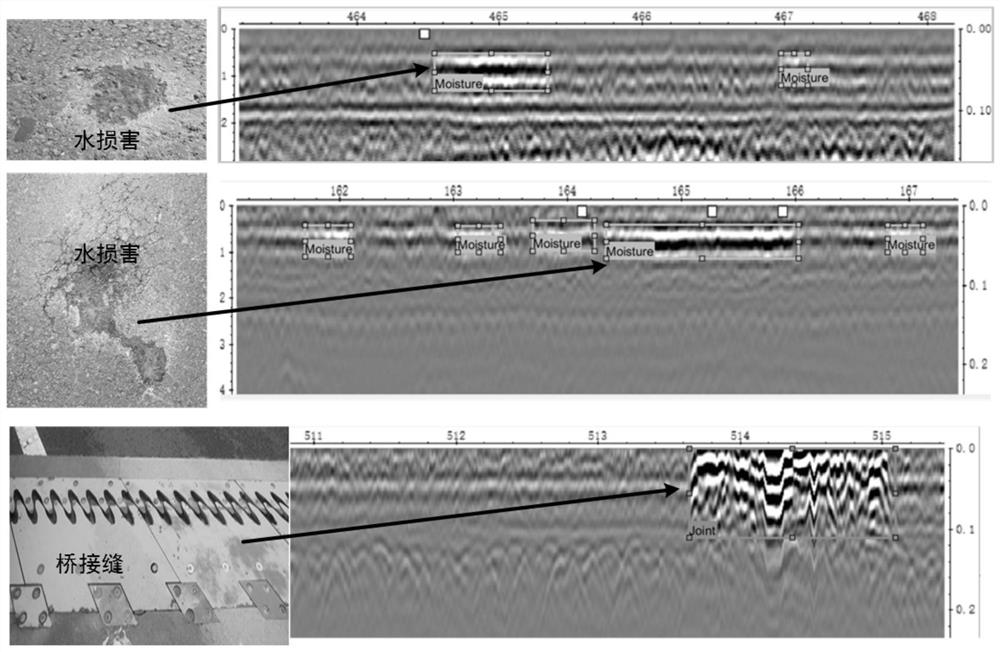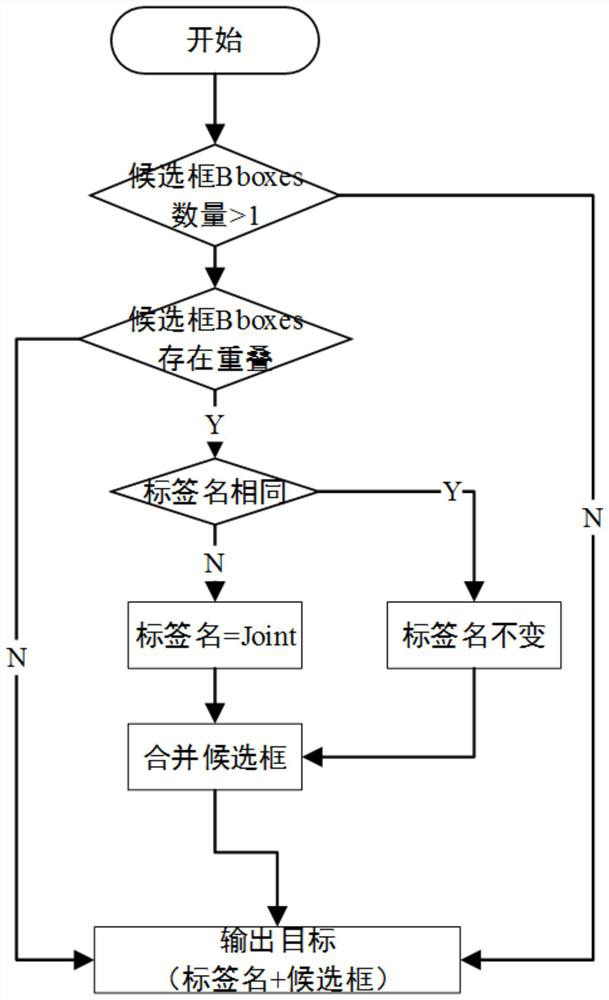A water damage detection method for asphalt pavement based on self-adaptive selection of map gray scale
A detection method and self-adaptive technology, which is applied in the detection of asphalt pavement water damage based on the self-adaptive selection of map gray scale, in the field of asphalt pavement water damage, which can solve the problem of not considering the impact, accurate detection of water damage, and the inability to accurately locate the water damage area To achieve the effect of automatic detection and precise positioning, regular detection and patrol inspection, precise maintenance and intelligent maintenance
- Summary
- Abstract
- Description
- Claims
- Application Information
AI Technical Summary
Problems solved by technology
Method used
Image
Examples
Embodiment 1
[0104] This embodiment provides a kind of asphalt pavement water damage detection method, such as Figure 1 to Figure 3 shown, follow the steps below:
[0105] Step 1: Obtain the water damage atlas dataset through the GPR pavement survey:
[0106] Step S11, GPR pavement survey and data collection: use the GPR system to collect on-site data on the asphalt pavement, and during the process of on-site data collection, determine the damaged area of the pavement where there is bleeding or whitening;
[0107]In step S11, during the on-site data collection process, the sampling parameters require that the sampling distance be 1.6 GHz, and the sampling frequency be 10 to 20 times the main frequency of the antenna.
[0108] These markers will appear as small squares above the GPR map, such as figure 2 The mark "□" in the radar map in the middle corresponds to the water damage defect area, and the GPR map corresponding to these marks is used as the true value of water damage to dete...
Embodiment 2
[0162] This embodiment provides a method for adaptive selection of ground penetrating radar maps for water damage detection, such as Figure 9 As shown, the method adaptively selects the ground penetrating radar map according to the contrast of the ground penetrating radar map, and the method is carried out according to the following steps:
[0163] Step 1, read the preprocessed GPR data:
[0164] After preprocessing the GPR data, randomly generate radar atlases with different contrasts within the set contrast value range, and construct an initial random atlas dataset. The size of the initial random atlas dataset is N pictures, and the initial random atlas The map data set is used to determine whether it contains the target;
[0165] The method for obtaining the GPR data is as follows: using the GPR system to collect on-site data on the asphalt pavement, during the process of on-site data collection, determine the damage area where the road surface appears whitish or whitish, a...
Embodiment 3
[0232] This example presents a water damage detection method for asphalt pavement based on the adaptive selection of the map gray scale, such as Figure 1 to Figure 17 As shown, this method is basically the same as the asphalt pavement water damage detection method in Example 1, the only difference is that in step S12, "set the contrast of the GPR spectrum and intercept the GPR spectrum according to the length of 5-6m" is replaced by "choose a suitable Contrast GPR spectrum and intercept the GPR spectrum according to the length of 5-6m".
[0233] The method adopted in the selection of the GPR spectrum of suitable contrast is the ground-penetrating radar spectrum adaptive selection method;
[0234] The adaptive selection method of the ground penetrating radar spectrum is the same as the water damage detection method for asphalt pavement described in Embodiment 2 for water damage detection.
[0235] The recognition models described in Embodiment 1 and Embodiment 2 are the same ...
PUM
 Login to View More
Login to View More Abstract
Description
Claims
Application Information
 Login to View More
Login to View More - R&D
- Intellectual Property
- Life Sciences
- Materials
- Tech Scout
- Unparalleled Data Quality
- Higher Quality Content
- 60% Fewer Hallucinations
Browse by: Latest US Patents, China's latest patents, Technical Efficacy Thesaurus, Application Domain, Technology Topic, Popular Technical Reports.
© 2025 PatSnap. All rights reserved.Legal|Privacy policy|Modern Slavery Act Transparency Statement|Sitemap|About US| Contact US: help@patsnap.com



